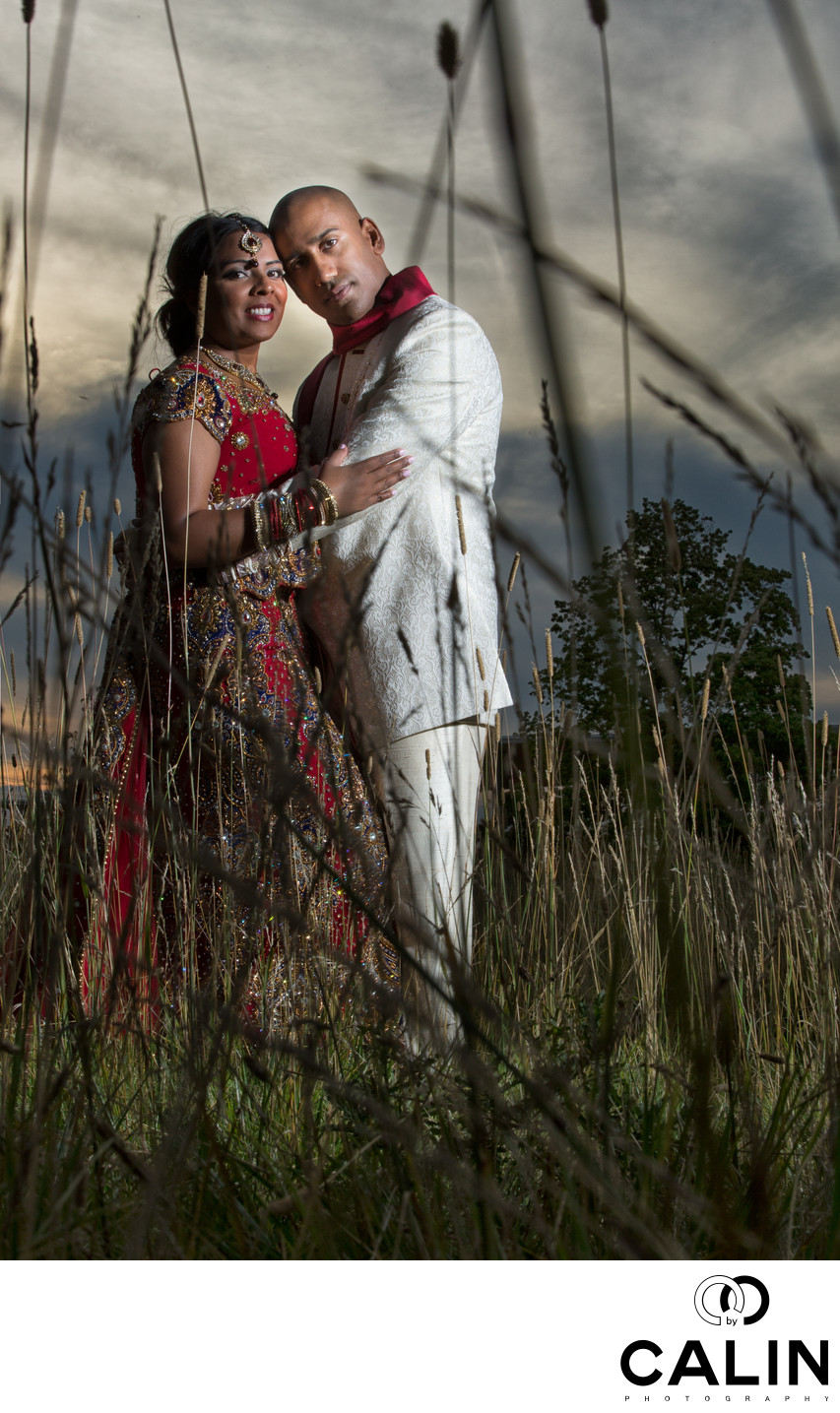
I remember how I started my Toronto wedding photography career by photographing an Indian wedding. Even more, that particular wedding was my first ever published on The Big Fat Indian Wedding website. That is probably why I always loved photographing South Asian weddings.
Indian weddings are extremely intense for a wedding photographer as the usually last three days. The first day is the mehndy or henna party when the families meet, eat good food and dance. A henna artist draws an intricate design on the brides palms hands and feet using a paste made of a traditional Indian plant called henna.
The second day, is the main wedding day. On this particular day, the groom's mother in law washes the groom's feet and then he's offered sweets and milk. On the wedding day the brides relatives steel the groom's shoes and he supposed to pay them back. The groom depicted in this picture have plenty of Indian rupees tried to bribe his the new family to return his shoes but to no avail. In Toronto, the only accepted form of payment is the Canadian dollar.
Indian weddings offer amazing photography opportunities through the multitude of events and the diversity of colours.
During Hindu or Sikh weddings, the groom usually arrives on a white horse or Ghodi. This wedding procession is called baraat and is very interesting for a Westerner. The bride and grooms' female relatives girls dance around the horse while a drum band plays loudly. All this time, the bride was watching the procession hidden behind a curtain. Unfortunately, I have been in situations where the horse was scared by the noise made by the dhol (Indian drum) and started running uncontrollably with the groom on his back.
That is the reason why often the grooms play it safe and choose to ride in a car or on a Baraat elephant.
Off to the customer exchangeable garlands, the marriage ceremony officially begins and the bride and groom. This moment is one of the most important and has to be documented by an Indian wedding photographer.
During the wedding ceremony, the couple, accompanied by the brides parents sit under a mandap (a raised structure covered by a canopy). One of the most important phases of an Indian wedding ceremony is the mangal phera or in layman's terms a pre-ambulation around the sacred fire (agni) four times. The Mangal Fera symbolizes the for human goals of Dharma (virtue), Artha(wealth), Kama (family), and Moksha (illumination.)
This particular wedding photo was captured at nighttime and has a few elements that make it stand out. First, I photographed this image while lying on the ground and a few feet from the bride and groom and shooting upwards. The unusual point of view creates an interesting perspective. Also, the grass placed right in front of my lens gives the image a reference point in the background and make this wedding picture three dimensional. To create this picture, I used a 24 to 70 mm lens shot around 24 mm. Wide angle lenses can create barrel distortion when shot in landscape format but one can use this to one's advantage by shooting his clients in portrait format. That, has a slimming effect on the subjects.
To increase the drama in this image, I enhanced the background picture and dodged and burnt the edges of the frame so that the viewers eye is guided towards the subjects.